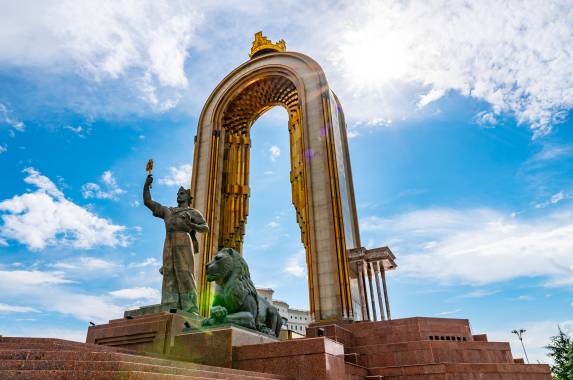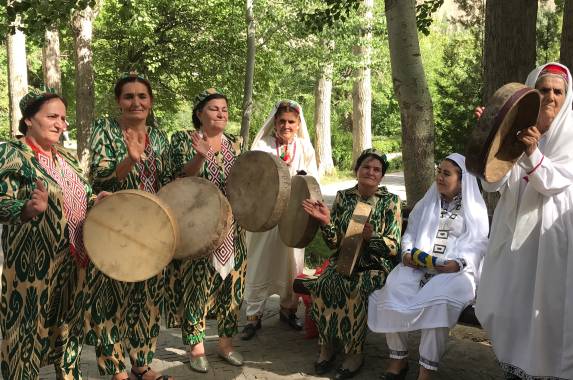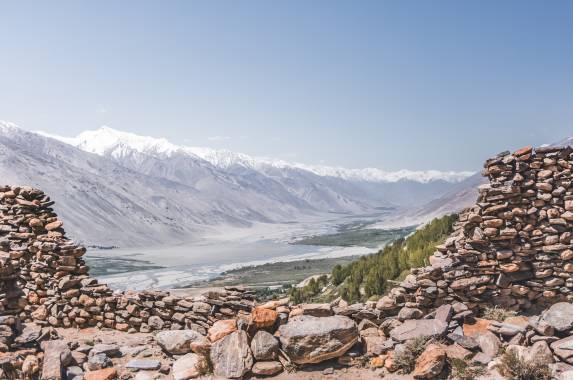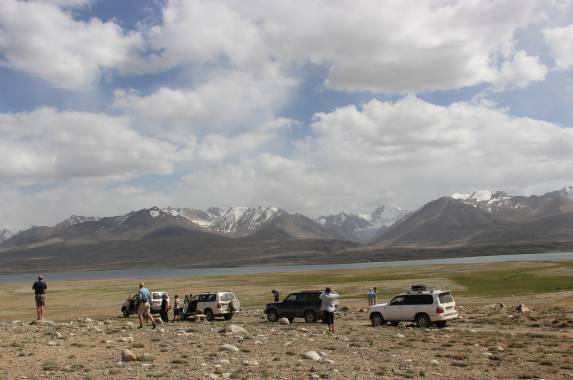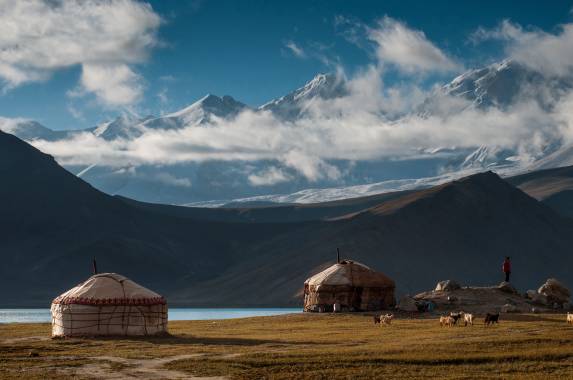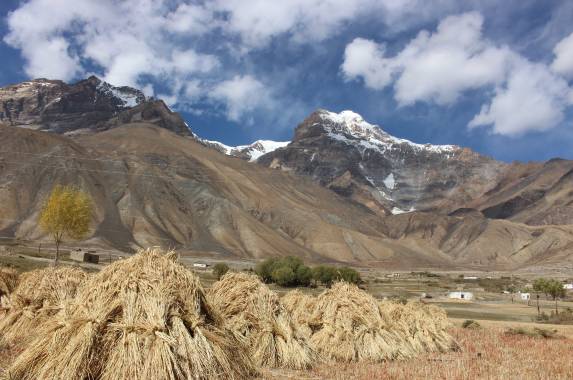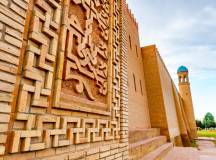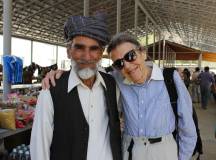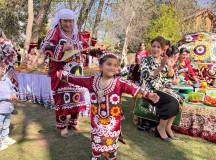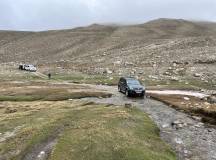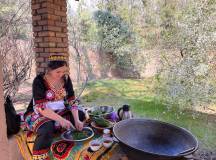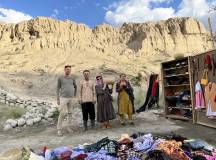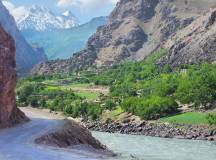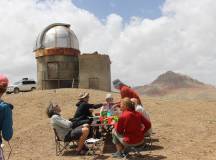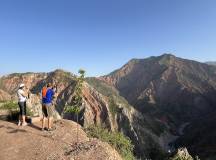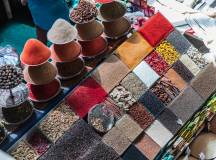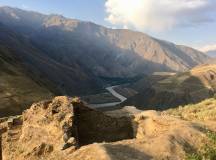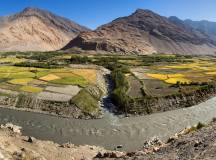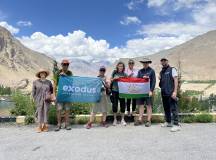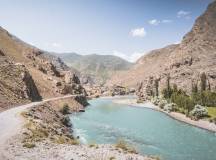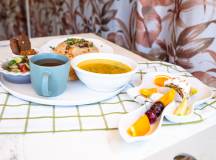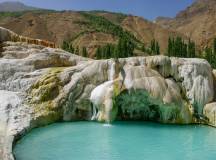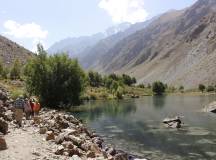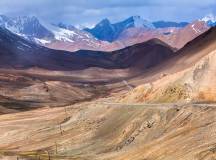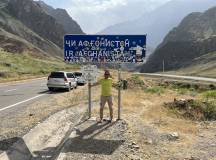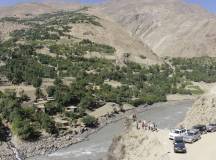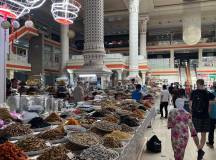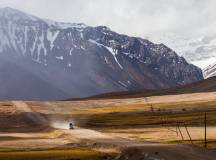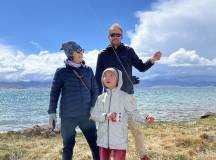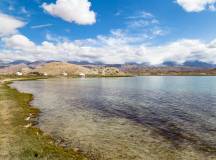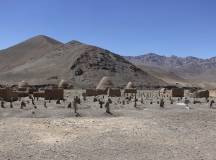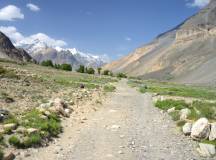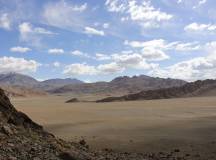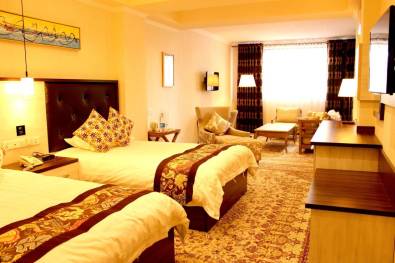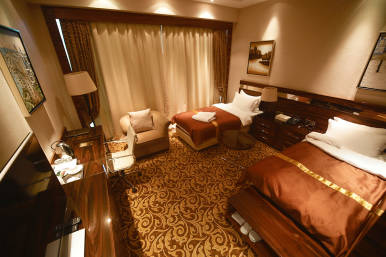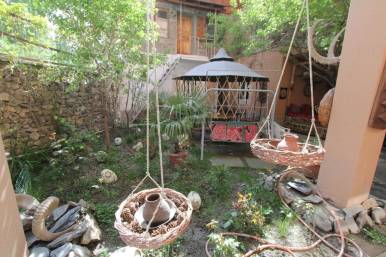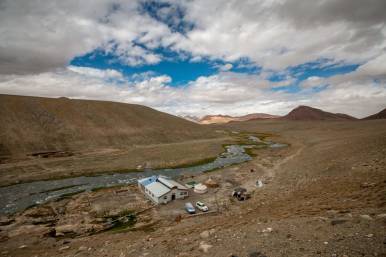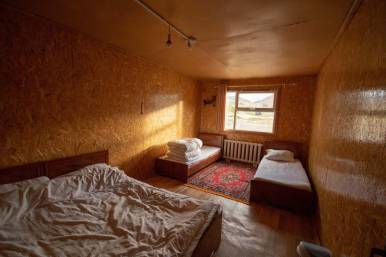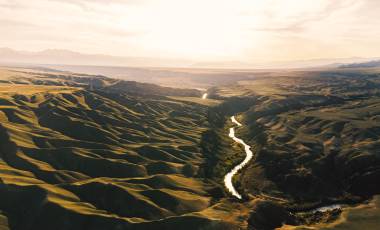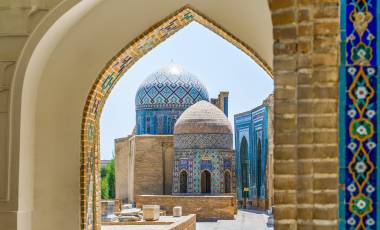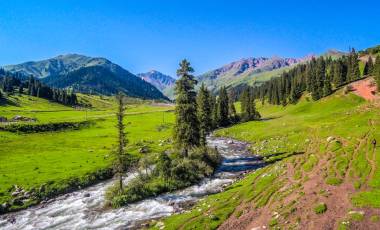- Drive along the spectacular Pamir Highway
- Enjoy views to the Hindu Kush and Karakorum mountains
- Peer across the Panj river into Afghanistan
- Trace the lines of the Wakhan Corridor, a region associated with the Great Game
- Visit archaeological sites and remnants of the Silk Road
- Search for Marco Polo sheep and markhor goats
- Take a day walk between remote villages in Bartang

Tajikistan Expedition: Pamir Highway & beyond
- Home
- Asia
- Tajikistan
- Culture
- Tajikistan Expedition: Pamir Highway & beyond
Start
Finish
Availability
Land Only Trip Price
Optional Single Supplement
Friday Friday
12 Jun 2026 12 Jun 2026
Saturday Saturday
27 Jun 2026 27 Jun 2026
Availability
Guaranteed (Available)
Land Only Trip Price CAD 8550 CAD 8550 Book with CAD 2137 deposit Book with CAD 2137 deposit
Optional Single Supplement
+CAD 599
Available upon Request
Availability
This departure is available for new bookings and has reached the minimum number of passengers required to go ahead. Please click Continue to proceed with booking or contact our Sales team for assistance.
View Trip NotesFriday Friday
31 Jul 2026 31 Jul 2026
Saturday Saturday
15 Aug 2026 15 Aug 2026
Availability
Available
Land Only Trip Price CAD 8550 CAD 8550 Book with CAD 2137 deposit Book with CAD 2137 deposit
Optional Single Supplement +CAD 599
Availability
This departure is available for new bookings, and will be guaranteed to go ahead once it reaches minimum numbers. Please click Continue to proceed with booking or contact our Sales team for assistance.
View Trip NotesFriday Friday
11 Sep 2026 11 Sep 2026
Saturday Saturday
26 Sep 2026 26 Sep 2026
Availability
Guaranteed (Available)
Land Only Trip Price CAD 8550 CAD 8550 Book with CAD 2137 deposit Book with CAD 2137 deposit
Optional Single Supplement +CAD 599
Availability
This departure is available for new bookings and has reached the minimum number of passengers required to go ahead. Please click Continue to proceed with booking or contact our Sales team for assistance.
View Trip NotesFriday Friday
11 Jun 2027 11 Jun 2027
Saturday Saturday
26 Jun 2027 26 Jun 2027
Availability
Available
Land Only Trip Price CAD 10070 Book with CAD 2517 deposit Book with CAD 500 deposit
Optional Single Supplement +CAD 627
Availability
This departure is available for new bookings, and will be guaranteed to go ahead once it reaches minimum numbers. Please click Continue to proceed with booking or contact our Sales team for assistance.
View Trip NotesFriday Friday
30 Jul 2027 30 Jul 2027
Saturday Saturday
14 Aug 2027 14 Aug 2027
Availability
Available
Land Only Trip Price CAD 10070 Book with CAD 2517 deposit Book with CAD 500 deposit
Optional Single Supplement +CAD 627
Availability
This departure is available for new bookings, and will be guaranteed to go ahead once it reaches minimum numbers. Please click Continue to proceed with booking or contact our Sales team for assistance.
View Trip NotesFriday Friday
10 Sep 2027 10 Sep 2027
Saturday Saturday
25 Sep 2027 25 Sep 2027
Availability
Available
Land Only Trip Price CAD 10070 Book with CAD 2517 deposit Book with CAD 500 deposit
Optional Single Supplement +CAD 627
Availability
This departure is available for new bookings, and will be guaranteed to go ahead once it reaches minimum numbers. Please click Continue to proceed with booking or contact our Sales team for assistance.
View Trip NotesReviews
Add your own reviewJust do it
This was a trip, full of WOW moments with a good dose of awe and wonder.
If you don’t travel well in the back of a hot, very bumpy car for hours on end, this is definitely not the trip for you. If you can’t do without home comforts, or don’t like early mornings or sleep disturbances, this is not the trip for you. If you need your own space, this is not the trip for you. If you are in any way, a picky eater, this is not the trip for you.(having said that, our vegetarian and vegan group members ate as well as any of us)
If, however, you have an open mind, and a ‘come what may’ attitude, this is a trip of a lifetime. The itinerary of this trip is such that we saw more of this amazing country and immersed ourselves in the culture of these amazing, resilient people more than any other trips that we encountered along the way. Some of the journeys were tough, with real abject dangers from their remoteness and altitude but the rewards in terms of scenery and experiences were more than worth it. The homestay hosts were, on the whole, welcoming and generous and they managed to provide well cooked food and little treats, even though they appeared to have so little. We engaged with the local children where possible, and took great joy in teaching them UNO and playing with them. They were inquisitive and always open to any new experiences we could provide. Rubik’s cube was a hit too, as were the kites provided by Safina, our group leader. Because of the extent of the itinerary, we gradually learned so much about this relatively unknown country, both about the richness of its physical geography and the historical, cultural and social, regional traditions and differences. It had its tough moments but they only added to the lasting impression of an amazingly beautiful country of strong, proud and content people who thrive against the odds.
Most Inspirational Moment
It is hard to pick one out of so many inspiring moments but I think arriving at the highest homestay (4200m) and immersing ourselves in the amazingly constructed 'spa' built around the natural hot springs was perhaps it. Showing how to make the absolute most of what mother earth can provide. We take so much for granted back home. This construction must have taken so much effort in such harsh conditions most of the year. Just breathtaking.
Thoughts on Group Leader
Safina was a joy to have as a group leader. Having grown up in the Pamirs, she was knowledgable and informative. She immersed herself in our group and couldn't do enough for us. She always had a smile and was always well prepared and on time. She made us feel comfortable about the potential altitude effects and checked in regularly. As an all-female group, it was easy to see the potential difficulties she may have faced in such a male-dominated country, but she took it all n her stride and trailblazed her way through, ensuring we received the best possible experience.She was an inspiration, not only to us and our drivers, but also, hopefully the local women (and men) in the more 'culturally traditional' areas.
Advice for Potential Travellers
We were occasionally hungry, especially on the long journeys, so I would suggest taking a few snacks along, either from home or from Dushanbe before you set off. I benefitted from drinking electrolytes regularly as the dehydration effects of increased altitude creep up. Whilst none of us took altitude medication, we all had some unpleasant effects which, had they got any worse, we would have needed it. So taking some along would be advisable. Good walking boots. Even though we didn't do a great deal of hiking, there were streams to cross and very rough terrain. Worth their weight in gold.
Tajikistan adventure
This was an excellent trip through the high Pamir region of Tajikistan. Expect fabulous scenery, warm hospitality from the local people, and a certain amount of roughing it. If you are not prepared for dormitory accommodation sharing one long drop toilet with up to 20 people this is not the trip for you. Much of the journey is at high altitude over 4000 metres with little time to acclimatise.
Most Inspirational Moment
Viewing the snow capped peaks of Engels and Lenin, the Hindu Kush and high peaks of western China all in one day.
Thoughts on Group Leader
Dido was a star. He led the expedition with knowledge, skill and humour. His communication skills are excellent
Advice for Potential Travellers
Bring a sheet sleeping bag, pillow case and towel for the homestays. The food was excellent and plentiful. This is not a good trip for vegetarians. Drinking water was provided throughout. Diamox helps reduce the symptoms of acute mountain sickness eg insomnia and appetite loss. It was always possible to recharge phones and other devices. I took a powerbank but did not need to use it. Even though we travelled the border with Afghanistan and China we always felt safe. There were no "dodgy" moments. There are several walks on this trip to break up the hours in the cars.
An Adventure Above and Beyond. Kris and Garth.
If you want a truly off the beaten track adventure then this is the one for you.
Magnificent scenery, friendly hosts, culture and flora and fauna.
Most Inspirational Moment
Travelling along the Pamir Highway along the Afghan border, Wakhan corridor, Chinese border to Lake Karakul then down the Bartang valley is to say the least truly spectacular. If you are a nature lover there are flowers especially, birds and some animals. Homestays were above our expectations with very friendly hosts. Organisation by the host travel agency was excellent. Reliable four wheel drive vehicles with experienced drivers, on very demanding roads, made the journey exceptional.
Thoughts on Group Leader
Our guide, Didorali, was thrown in at the deep end when our original guide Sherali had a family emergency. Didorali was very friendly and spoke excellent English. He managed all situations well and organised our hotel and homestays efficiently. He always made sure that the group was sorted before he thought of himself. Although this is a review of our leader we would like to mention the friendliness and excellent driving skills of our drivers.
Advice for Potential Travellers
Be prepared for some long days travelling over very rough roads. Three per vehicle means that you all have excellent views on a seat rotating basis. As the only couple we were fortunate enough to have our own room everywhere otherwise you may have to share. There were hot showers everywhere except at the highest homestay which had a thermal pool. In some homestays there was only one toilet and they could be outside. They were always clean and western style. Food was plentiful but limited for vegetarians. We had no health issues with food or altitude. Having travelled widely this trip would certainly rank in our Top Ten. We recommend the trip to anyone with a true spirit of adventure who appreciate that all home comforts may not be available. GO FOR IT!
Adventure in the Pamir
This was truly an adventurous trip, in fact an intrepid 4×4 adventure into one of the least travelled parts of the world. The constantly changing scenery, geography and geology was often mind-blowing due to its vastness and beauty, especially with the spring flowers in bloom. Photographs do not do any justice. There are also stunning views looking into Afghanistan, Pakistan and China. The trip gave a brief insight into the culture and lives of the people. This was a well designed trip exploring as much of the Pamirs as possible in the short time period!!
Most Inspirational Moment
Literally too many to choose! Following the Afghan border through the Whakan Valley seeing the Afghans going about their daily business; watching the Panj and Bartang rivers crash through narrow canyons; views across the Whakan Valley into the snow capped mountains of Pakistan; the remoteness of Lake Zorkul and Bam-i Dunya (the roof of the world); Lake Karakul surrounded by snowy mountains; driving through the Bartang Valley; the walk up to the village and lake of Jizewdara Valley. Finally the friendliness and welcome of the Tajikistan people, especially in the home stays. Many certainly could not do enough to make our stay more comfortable and memorable.
Thoughts on Group Leader
Having stepped in on Day 3 after we had already started, Didorali did really well. He was well organised, pleasant and courteous. He worked well with all the drivers and made sure that we were all sorted at home stays, hotels, etc and at mealtimes before sorting himself. The drivers were excellent and fully proficient in handling the off-road (and sometimes not even off-road) conditions and extreme weather conditions. Despite limited English they tried to engage in conversation and were good fun on the long days with their music and occasional dancing!
Advice for Potential Travellers
This is a truly adventurous off-road trip. Creature comforts were not always there, but many of the home stays exceeded expectations, having hot showers although a few had little more than a basin to clean up at. Everywhere we stayed had western style toilets, albeit sometimes only one, which might be a short trek outside and often with a queue! Much of the home stay and guesthouse accommodation is shared, not en-suite and sometimes not in separate private rooms; maybe just a corridor or a platform where a mattress could be placed, or even outdoors if you wish. Ear plugs were a necessity, especially if you were in the corridor leading from all the other rooms to the toilet, or to the kitchen when the home stay owners started to prepare for breakfast at a very early hour! On the whole the food at the home stays and guesthouses was good and plentiful, but was occasionally quite limited, especially some of the breakfasts, just bread and jam. The drives are long, bumpy and dusty. Some days are very long especially the journey between Kalai Khumb and Khorog (on the way out and back) due to a landslide but mainly the planned roadworks that closed sections of the road for several hours at a time. Efforts were made to travel to avoid the roadworks (a very early start) but going the landslide meant this did not work and on the return the construction workers just decided to start work early! Be prepared to sit around for several hours. More often where we stopped there was no shade from the fierce sun, and with no opportunity to buy food or snacks. Meal times were quite random with often long periods between meals. I would certainly recommend bringing plenty of snacks or buying them in the market in Dushanbe, as there are little to no options after that except places like Khorog or Murghob. The trip notes originally mentioned changing $200 to cover all expenses not covered (now states $100). There are limited opportunities to buy souvenirs, snacks, etc, so most people ended up having about or more than $100 left. However, this can be used for tips. Also note that changing US dollars with older larger denomination notes ($50 or 100) comes at a much inferior rate. If you have these then make sure that they are the latest version or use small denominations.
A fabulous journey through the Wackhan valley to the remote and untouched Pamir mountains
This was the first trip Exodus have done to this area.. There is spectacular and varied scenery on route, wonderful people and definitely a journey to remember. I loved every minute of it.
If you like an adventure, travelling to relatively unexplored areas, enjoy Mountains, like an insight into the lives and culture of the local people and their history and don’t mind roughing it a bit, this is a trip for you.
Most Inspirational Moment
There were several ..
Thoughts on Group Leader
Our guide Didorali was excellent, as too were all the drivers.
ATJ: Tajikistan Expedition: Pamir Highway and Beyond
This was a totally amazing and very real adventure! One of my all time favorites; for me, it ranks with Pakistan, Papua New Guinea and Rwanda. It’s not for the faint of heart – it’s tough and yet worth every squat on a toilet, dust in the eyes, bumpy roads and lack of privacy. It makes one feel totally alive. Plus it’s an incredibly beautiful and fascinating country filled with lovely people!
Thoughts on Group Leader
Didorali was an amazing tour guide. Solicitous, intelligent and speaks excellent English
An amazing adventure in a stunning country
No words or photos can really do justice to this trip, but, to give you an idea, it went straight into my top 3 trips ever, alongside Zim/Bots/Namibia and Falklands/S Georgia/Antarctica, even though I has a bad case of travellers’ tummy.
Most Inspirational Moment
Hard to pick, but either the stunning river valley along the Afgan border, the extraordinary scenery in the very remote area between Lake Zorkul/Djartygubez and re-joining the Pamir Highway.
Thoughts on Group Leader
Tour leader was well organised and very helpful. Ideally he'd have known more about plants and birds etc, but as he stepped in at the last minute, due to the planned leader (who was more of a mountain guide) having a family emergency, he did extremely well. The drivers are exceptional. They minimised the bumps and made me feel safe on roads that would normally have me shutting my eyes.
Advice for Potential Travellers
If you want an adventure through staggering scenery and an incredibly welcoming country and don't mind roughing it, go on this trip. However, the roads are very bumpy (I am pretty sure all the Toyota Prados we had needed a full service after the punishment we gave them), the drives can be long, you will be sharing rooms with potentially several other people (max 5 in our case) and washing facilities can be basic. Make the most of the hot springs. No matter how delicious it looks (it is), do make sure you avoid all uncooked fruit and veg unless you have washed it yourself in bottled water, even in the nice hotel in Dushambe. Ask if you can pre-book a single room in Qalai Khumb after the Bartang. For some reason it was not included in the single supplement. Similarly the Pamir Hotel in Murgob isn't necessarily included in the single supplement (due to only a few en suite rooms. That said the shared showers at the end of the corridor was more likely to have warm water.) Altitude increase is pretty gradual and they have back up plans if you do get altitude sickness. Nobody in our group seemed to have anything worse than a mild headache. NB a side effect of Diamox is diahorrea, so think carefully before taking it. I was given ciprofloxin by the Tajik doctors . Amoxycillin did nothing for my traveller's tummy. The tour organisers were amazing at getting me medical support.
You may also like
The Adventure Begins Here
Get regular inspiration straight to your inbox from Exodus’ experts.



